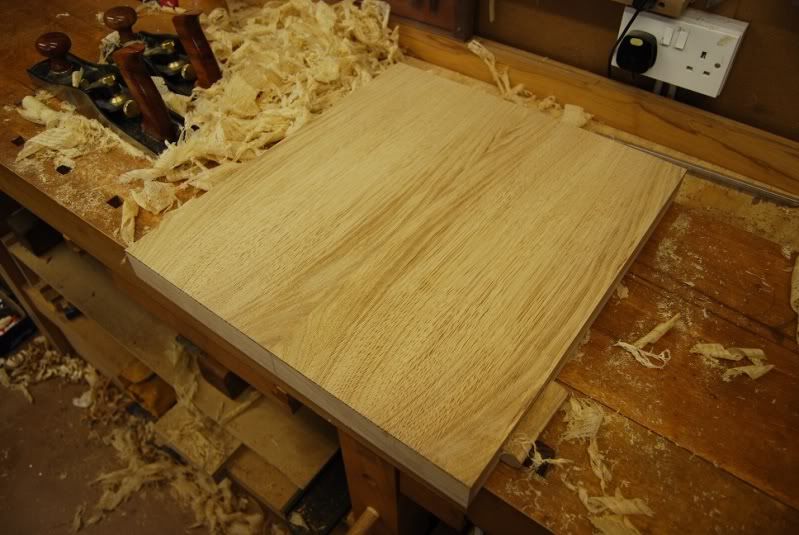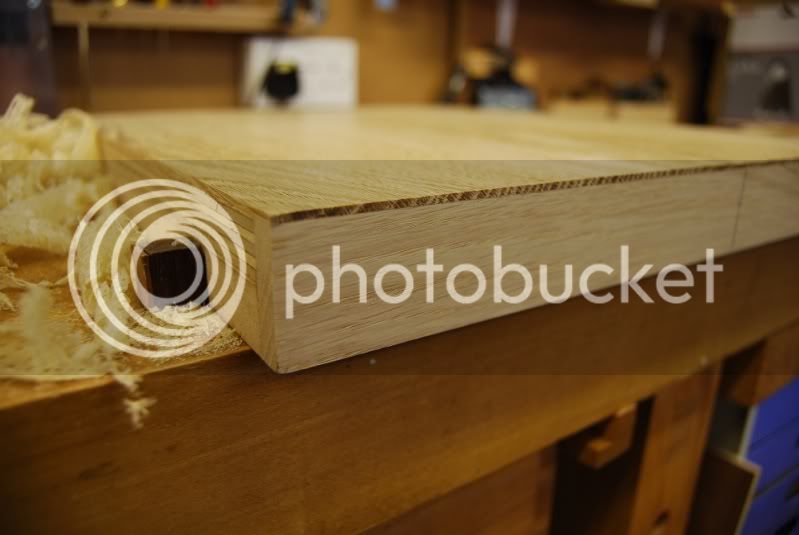custard
Established Member
I picked up a Sharp Skate honing jig last week and had the chance to use it over the weekend, honing a range of blades with a range of steels. A Veritas skew rebate plane A2 iron, a cambered 2 3/8" Karl Holtey S53 iron, a cambered 2 3/8" Stanley Sweetheart iron, a pair of Blue Spruce A2 skew chisels, a 1" Bristol Design (O1?) paring chisel, and a vintage Marples 3/8" mortice chisel. These were honed using a variety of Shapton stones, diamond stones, and the Scary Sharp system.
I normally either freehand hone, or use either Veritas honing jigs (with both straight and cambered rolelrs) or the small Richard Kell jig for straight chisels under 1" wide.
I won't repeat Derek Cohen's earlier review
http://www.inthewoodshop.com/ToolReview ... Skate.html
except to make the following points,
1. I think I got a later version of the jig than Derek tested, it now includes a docking station that allows very fast and accurate setting of the angles in whole degree increments from 45 down. I measured the blade extension with digital calipers at both ends of the blade and the Sharp Skate seemed to be delivering slightly better accuracy and repeatability than the Veritas jig's dedicated angle setting tool but without the dial-in facility for micro bevel adjustment. I didn't check the accuracy of the skew setting, it's easier and faster on the Sharp Skate, but only with a few pre-set angles, the Veritas jig is more versatile in terms of range of angles.
2. The Sharp Skate makes it easier to use more or all of the stone's surface. Although this is good I'm not sure it's useful. I flatten the Shaptons pretty much after every use, and Scary Sharp and Diamond stones don't need flattening. So the only circumstances where this might be a practical advantage would be for a waterstone user who has the discipline to methodically use the Sharp Skate over the stone's entire surface, but lacks the discipline/equipment to regularly flatten the waterstone.
3. It cambers far better than I was expecting, every bit as good as the Veritas with the cambered roller and way better than I can do freehand (in fact it's my ineptitude with freehand cambering that mainly makes me use a honing jig).
4. As Derek observed, it's a lovely jig to use. Like the small Kell jig the honing action is smooth and refined, I could use it for much longer than the Vertas without cutting off the circulation to my fingers! The serrations on the clamping arm are also a great design improvement over the Veritas, blades show no tendency to swing out of square, and the large clamping arm knob makes it easy to fasten the blade firmly, again a real improvement over the Veritas. For children or a woodworker with the first signs of arthritis, these might be decisive advantages.
5. It's a bit pricey, but not that far removed from a fully loaded Veritas.
6. But the Sharp Skate has, for me at least, one serious shortcoming. It's extremely difficult and time consuming to clean the wheels when switching abrasive grades, so grit carry over is likely to be a problem. Freehand honing just requires wiping the blade and your fingers, the Veritas has one simple roller to clean, the Kell guide two easily accessible wheels. But the Sharp Skate requires patient dabbing at nine tiny and semi-hidden wheels, and that's about eight more than my patience can tolerate!
7. I haven't used the freshly honed tools enough to have formed an opinion about the benefits of side sharpening versus traditional "for-and-aft" honing, but in the limited experience over the weekend I couldn't honestly see a difference one way or the other.
I normally either freehand hone, or use either Veritas honing jigs (with both straight and cambered rolelrs) or the small Richard Kell jig for straight chisels under 1" wide.
I won't repeat Derek Cohen's earlier review
http://www.inthewoodshop.com/ToolReview ... Skate.html
except to make the following points,
1. I think I got a later version of the jig than Derek tested, it now includes a docking station that allows very fast and accurate setting of the angles in whole degree increments from 45 down. I measured the blade extension with digital calipers at both ends of the blade and the Sharp Skate seemed to be delivering slightly better accuracy and repeatability than the Veritas jig's dedicated angle setting tool but without the dial-in facility for micro bevel adjustment. I didn't check the accuracy of the skew setting, it's easier and faster on the Sharp Skate, but only with a few pre-set angles, the Veritas jig is more versatile in terms of range of angles.
2. The Sharp Skate makes it easier to use more or all of the stone's surface. Although this is good I'm not sure it's useful. I flatten the Shaptons pretty much after every use, and Scary Sharp and Diamond stones don't need flattening. So the only circumstances where this might be a practical advantage would be for a waterstone user who has the discipline to methodically use the Sharp Skate over the stone's entire surface, but lacks the discipline/equipment to regularly flatten the waterstone.
3. It cambers far better than I was expecting, every bit as good as the Veritas with the cambered roller and way better than I can do freehand (in fact it's my ineptitude with freehand cambering that mainly makes me use a honing jig).
4. As Derek observed, it's a lovely jig to use. Like the small Kell jig the honing action is smooth and refined, I could use it for much longer than the Vertas without cutting off the circulation to my fingers! The serrations on the clamping arm are also a great design improvement over the Veritas, blades show no tendency to swing out of square, and the large clamping arm knob makes it easy to fasten the blade firmly, again a real improvement over the Veritas. For children or a woodworker with the first signs of arthritis, these might be decisive advantages.
5. It's a bit pricey, but not that far removed from a fully loaded Veritas.
6. But the Sharp Skate has, for me at least, one serious shortcoming. It's extremely difficult and time consuming to clean the wheels when switching abrasive grades, so grit carry over is likely to be a problem. Freehand honing just requires wiping the blade and your fingers, the Veritas has one simple roller to clean, the Kell guide two easily accessible wheels. But the Sharp Skate requires patient dabbing at nine tiny and semi-hidden wheels, and that's about eight more than my patience can tolerate!
7. I haven't used the freshly honed tools enough to have formed an opinion about the benefits of side sharpening versus traditional "for-and-aft" honing, but in the limited experience over the weekend I couldn't honestly see a difference one way or the other.



































